How to Craft an Effective Inquiry Letter: Templates & Guidelines
Drafting a well-structured inquiry letter is a fundamental skill in the professional world. Whether you’re seeking information about a job opening, a product, or a service, an effective inquiry letter can help you gather important details while making a good impression. This comprehensive guide will delve into the process of writing an inquiry letter, including its purpose, essential components, and a step-by-step approach, along with a customizable template.
Understanding the Purpose of an Inquiry Letter
An inquiry letter, also known as a letter of interest, is a type of correspondence used to request information about a product, service, job vacancy, or other opportunities. It’s a proactive way of expressing your interest and initiating communication without the pressure of a formal application or proposal.
Essential Components of an Inquiry Letter
An effective inquiry letter should include:
Introduction: Briefly introduce yourself and your purpose for writing.
Specific Inquiry: Clearly state what information or details you are seeking.
Background Information: Provide context or background information that explains why you are making the inquiry.
Call to Action: Encourage a response or further communication from the recipient.
Steps to Writing an Effective Inquiry Letter
Start with a Professional Greeting: Address the recipient formally using their title and last name.
Introduce Yourself: Briefly mention who you are and your current position or role.
State Your Purpose: Clearly articulate the reason for your inquiry.
Provide Context: Offer background information that supports your inquiry and shows your interest.
Request Specific Information: Be clear about the information or response you are seeking.
Conclude Politely: End with a statement of appreciation for the recipient’s time and consideration.
How to Customize the Inquiry Letter Template
Use the template below as a starting point for your inquiry letter. Adapt it to suit your specific situation and the type of information you are seeking.
Personalize the Opening: Tailor the introduction to reflect your individual circumstances and the nature of your inquiry.
Detail Your Inquiry: Modify the body of the letter to specify the information you are requesting.
Adapt the Conclusion: Personalize the closing to leave a respectful and courteous impression.
Inquiry Letter Template
[Your Name] [Your Address] [City, State, Zip] [Your Email] [Your Phone Number] [Date] [Recipient’s Name] [Recipient’s Title] [Recipient’s Company/Organization] [Recipient’s Address] [City, State, Zip] Dear [Recipient’s Name], I am writing to inquire about [specific information you are seeking]. My name is [Your Name], and I am [your position or relevance to the inquiry]. [Provide background information related to your inquiry]. I am particularly interested in [specific details about your inquiry]. Could you please provide me with information regarding [specific questions or details you need]? [Optional: Mention any specific requirements or preferences you have]. I appreciate your time and effort in addressing my inquiry. If it is more convenient, I am available for a brief discussion over the phone or via email. Please let me know a suitable time for you. Thank you for considering my request. I look forward to your response. Sincerely, [Your Name]
By following this guide and template, you can create a tailored inquiry letter that effectively communicates your request for information, helping you to gather the necessary details for your professional or personal needs. Remember, a well-written inquiry letter is not only about seeking information but also about establishing a connection and making a positive impression.


